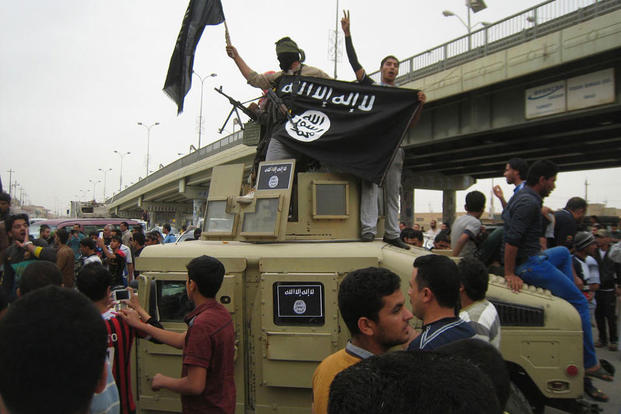More U.S. troops will begin deploying to Iraq in the next few weeks but it will take them at least three years to prepare the Iraqi forces to drive out ISIS, the new commander of U.S. and coalition forces said Thursday.
"We're talking a minimum of three years," before the Iraqi national security forces would be trained and equipped, and have the political backing to push the fighters of the Islamic State of Iraq and Syria from their entrenched positions in major cities, said Army Lt. Gen. James Terry, commander of Combined Joint Task Force—Operation Inherent Resolve (CJTF-OIR).
He said the U.S. has launched more than 1,360 airstrikes since Aug. 8, when President Obama gave the authorization. Those airstrikes have put ISIS on the defensive and diminished their ability to threaten areas not already in their control.
While still capable of mounting attacks, ISIS's main advances have been halted and they are now "transitioning to the defense," Terry said. "I think they're having a hard time in terms of communicating, in terms of re-supply," he said.
"I see the conditions right now being set for a pretty stable environment, but I still think we're — in terms of building some of the capabilities that are required there — probably about three years down the road, minimum," Terry said.
Terry said that careful preparations for the airstrikes were avoiding "collateral damage" and he had thus far received no credible reports of civilian casualties despite the lack of JTACs, or Joint Terminal Attack Controllers, to guide the attack aircraft. President Obama has barred U.S. troops from ground combat and limited them to train, advise and assist roles.
"We have some great capability in terms of precision" even without the JTACs, Terry said. He described an air campaign that put great emphasis on first establishing the positions of friendly forces. "If you're not careful," Terry said, "you can strike (Sunni) tribes, you could strike Iraqi security forces, and you could create a very bad situation."
Overhead Intelligence Surveillance and Reconnaissance (ISR) piloted and unmanned aircraft then relay information to command centers in Baghdad and the Kurdish capital of Irbil, where the ISR is then analyzed for targets and fed back to the attack aircraft, Terry said.
The effectiveness of the operation was evident in the fact that "I am tracking no civilian casualties" since the start of the air campaign, said Terry, who took command of the effort to degrade and defeat ISIS in October.
In an interview with the Wall St. Journal, Gen. Martin Dempsey, the chairman of the Joint Chiefs of Staff, said that the airstrikes in recent weeks had killed at least three top ISIS commanders.
"It is disruptive to their planning and command and control," Dempsey told the Wall Street Journal. "These are high-value targets, senior leadership."
Rear Adm. John Kirby, the Pentagon press secretary, later put out a statement confirming that "since mid-November, targeted coalition airstrikes successfully killed multiple senior and mid-level leaders"of ISIS.
-- Richard Sisk can be reached at richard.sisk@monster.com

























